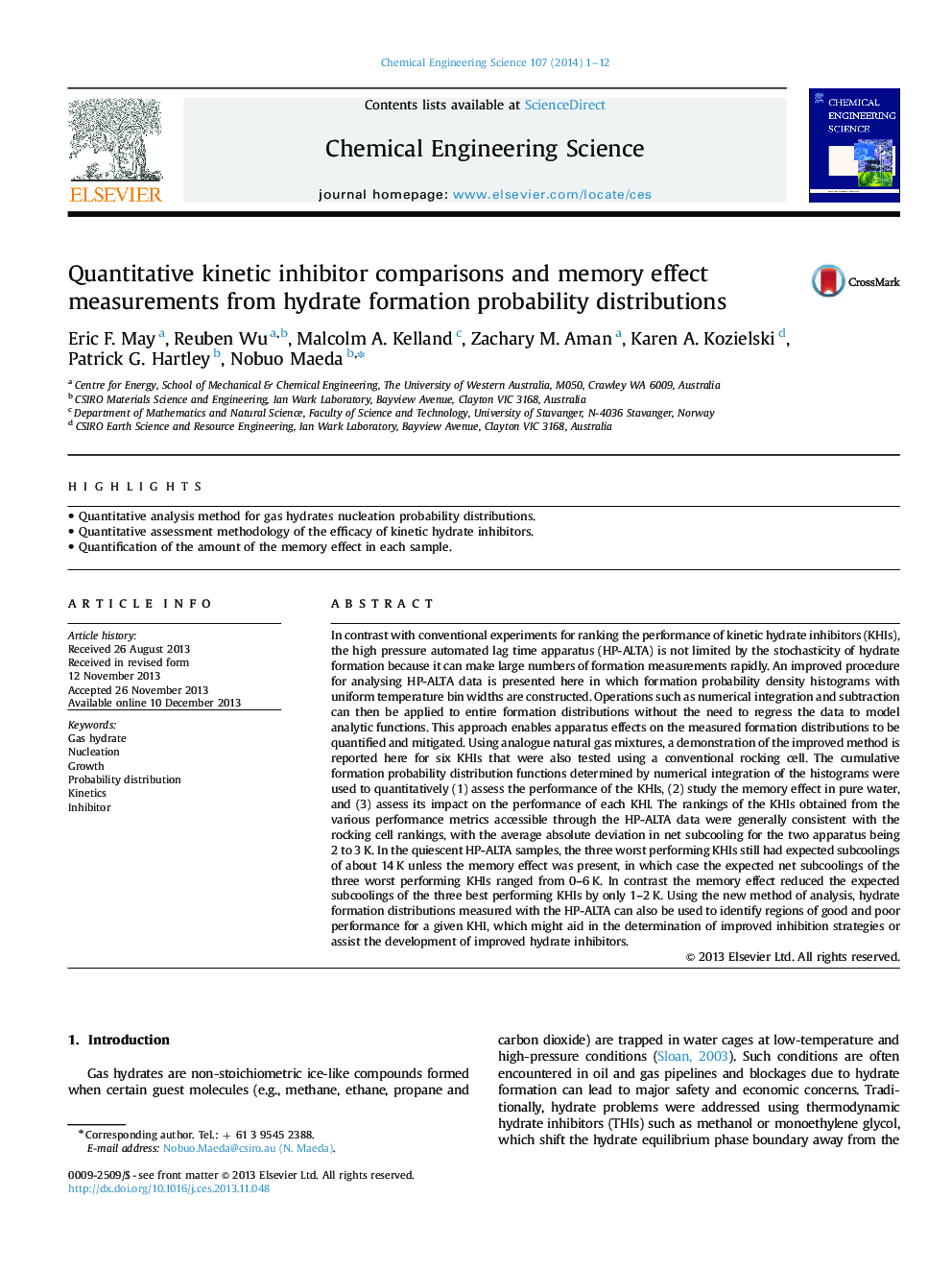| Article ID | Journal | Published Year | Pages | File Type |
|---|---|---|---|---|
| 154940 | Chemical Engineering Science | 2014 | 12 Pages |
•Quantitative analysis method for gas hydrates nucleation probability distributions.•Quantitative assessment methodology of the efficacy of kinetic hydrate inhibitors.•Quantification of the amount of the memory effect in each sample.
In contrast with conventional experiments for ranking the performance of kinetic hydrate inhibitors (KHIs), the high pressure automated lag time apparatus (HP-ALTA) is not limited by the stochasticity of hydrate formation because it can make large numbers of formation measurements rapidly. An improved procedure for analysing HP-ALTA data is presented here in which formation probability density histograms with uniform temperature bin widths are constructed. Operations such as numerical integration and subtraction can then be applied to entire formation distributions without the need to regress the data to model analytic functions. This approach enables apparatus effects on the measured formation distributions to be quantified and mitigated. Using analogue natural gas mixtures, a demonstration of the improved method is reported here for six KHIs that were also tested using a conventional rocking cell. The cumulative formation probability distribution functions determined by numerical integration of the histograms were used to quantitatively (1) assess the performance of the KHIs, (2) study the memory effect in pure water, and (3) assess its impact on the performance of each KHI. The rankings of the KHIs obtained from the various performance metrics accessible through the HP-ALTA data were generally consistent with the rocking cell rankings, with the average absolute deviation in net subcooling for the two apparatus being 2 to 3 K. In the quiescent HP-ALTA samples, the three worst performing KHIs still had expected subcoolings of about 14 K unless the memory effect was present, in which case the expected net subcoolings of the three worst performing KHIs ranged from 0–6 K. In contrast the memory effect reduced the expected subcoolings of the three best performing KHIs by only 1–2 K. Using the new method of analysis, hydrate formation distributions measured with the HP-ALTA can also be used to identify regions of good and poor performance for a given KHI, which might aid in the determination of improved inhibition strategies or assist the development of improved hydrate inhibitors.
